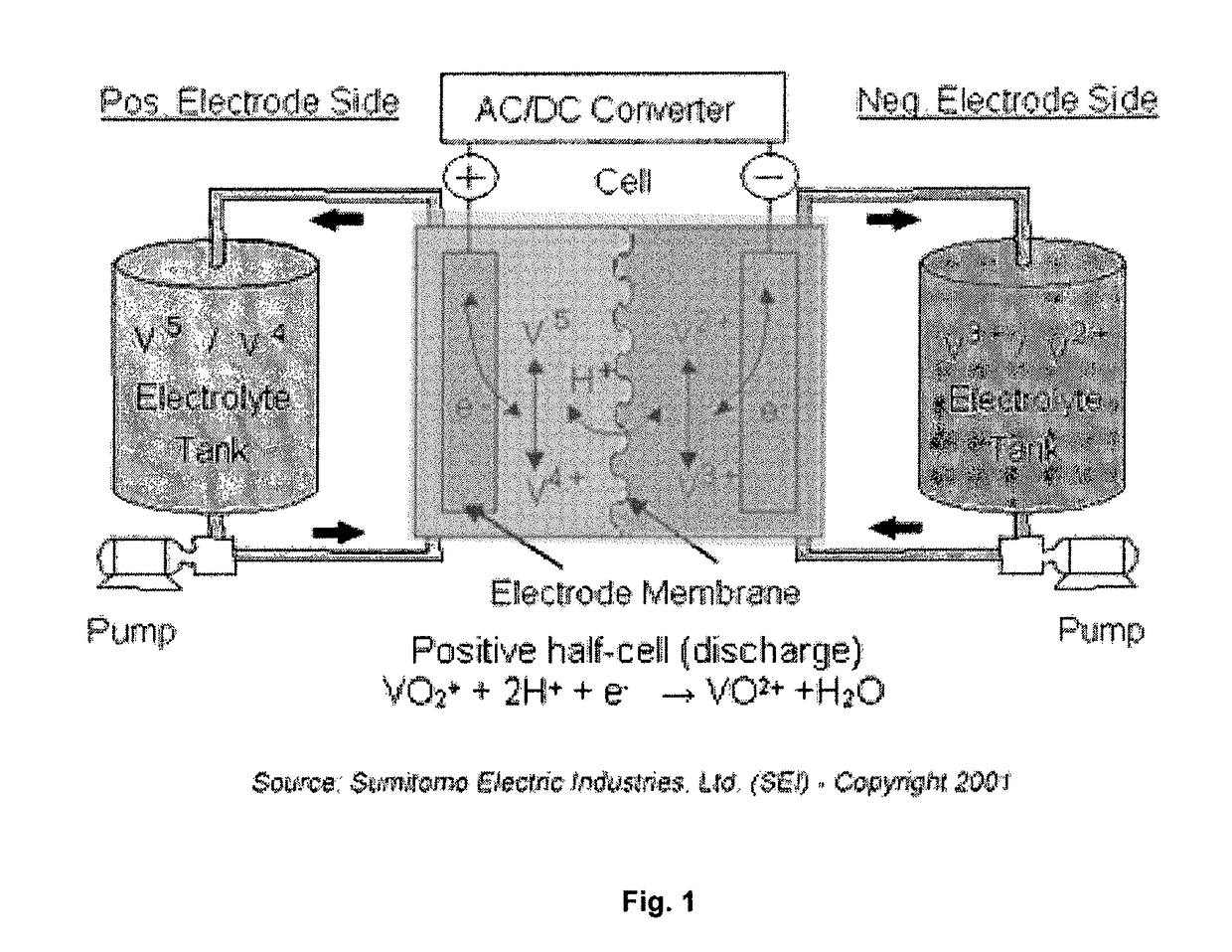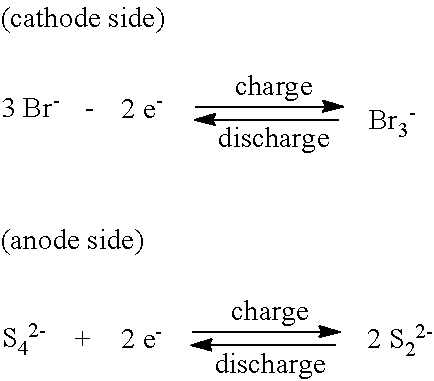Organic flow cell batteries and materials for use in same
- Summary
- Abstract
- Description
- Claims
- Application Information
AI Technical Summary
Benefits of technology
Problems solved by technology
Method used
Image
Examples
Embodiment Construction
[0022]For a more complete understanding of the present invention, reference is now made to the following description:
[0023]The present invention has been made upon studying two-electron processes which prevent the necessity of forming unpaired electrons (radicals) in organic molecules, and can readily be accommodated by changing the α- and π-bonds into a different oxidation state and can therefore be advantageous for enhancing both the stability and the cell potential of a battery system.
[0024]One requirement of any battery system is for an ion to pass through the separating membrane to compensate for the electron movement through the external circuit. Ions can be positive or negative, but some of the most common include H+, Li+, Na+, Mg2+. Coordination of these ions can be used to stabilise the organic molecules, particularly in their reduced states. This is particularly helped when atoms that enhance this coordination are available—typical atoms include O, N, S but can also includ...
PUM
 Login to View More
Login to View More Abstract
Description
Claims
Application Information
 Login to View More
Login to View More - R&D
- Intellectual Property
- Life Sciences
- Materials
- Tech Scout
- Unparalleled Data Quality
- Higher Quality Content
- 60% Fewer Hallucinations
Browse by: Latest US Patents, China's latest patents, Technical Efficacy Thesaurus, Application Domain, Technology Topic, Popular Technical Reports.
© 2025 PatSnap. All rights reserved.Legal|Privacy policy|Modern Slavery Act Transparency Statement|Sitemap|About US| Contact US: help@patsnap.com



